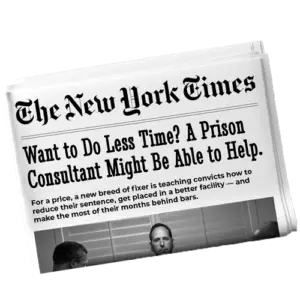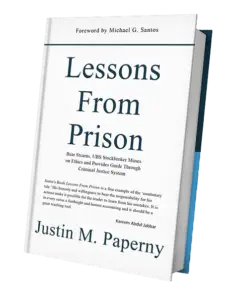I’ve said it in our newsletters—if you don’t build assets, the government will. They’ll define you with a DOJ press release, and that’s all your judge, probation officer, or case manager sees. I lived it. Too many in our community are still staring at shadows on the wall like Plato’s cave (April 20 newsletter). These ten assets are the way out.
1. Personal Narrative
Your narrative isn’t a résumé. It’s not “please feel sorry for me.” It’s a credibility test. In our May 25 newsletter, I wrote about how the DOJ tells a one-sided version. If you don’t write your own, they own it. A good narrative shows how you used to think, how you’ve changed, and how you understand the harm. That’s what anchors everything else—PSR, sentencing memo, even where you serve.
2. Release Plan
Tracii Hutsona, in Tucson, built her release plan while inside. She didn’t wait until the week before sentencing. That’s the point. Judges or case managers don’t care what you hope to do. They want to see what’s already happening.
3. Community Service
In the May 8 newsletter (Givers, Matchers, Takers), I wrote about how givers show up without keeping score. That’s how Tracii lived it—teaching women in Tucson how to prepare.
4. Letters of Support
I’ve seen 20 letters that all sound the same: “Great dad, hard worker, out of character.” Worthless. In Dignity in the Small Things (Aug 24), I wrote that dignity isn’t what you claim—it’s how others describe you. The best letters acknowledge the crime and point to specific changes over time. Five strong letters beat twenty generic ones.
5. Mitigation Video
When Glenn Hudson made his video, it wasn’t polished. No script. Just him, speaking plainly about what he did and what he’s done since. That’s what resonates. A judge or case manager seeing you unscripted—that’s real power.
6. BOP Programming Plan
In the 1,000 Minutes newsletter (September 7), I told the story of Michael asking me how much people would pay me for my pull-ups. The answer: zero. Case managers don’t want “I’ll make the most of my time.” That means nothing. They want specifics: RDAP, classes, work, projects. What you’ll do with your 1,000 minutes.
7. Financial Restitution
In The Janitor Who Tried (April 27), I reminded you that most people won’t even try. Some of our clients started with $100 a month—and the judge remembered it. Others promised to “start later”—and judges remembered that too, in the worst way. Effort today beats promises tomorrow.
8. Compassionate Release
In The Real Story (Aug 17), I wrote about authenticity—owning what you know and don’t know. Same principle here. If you ever want to ask for compassionate release, you need a paper trail that shows discipline, service, and growth. That trail starts now, not when you’re sick or desperate.
9. Prison Professors Profile
In Assets Before Sentencing (Aug 21), I told the story of someone who waited until sentencing week. By then, it looked fake. Your profile should show steady work—blogs, reflections, service. If it’s empty, or rushed at the end, it backfires.
10. Weekly Tracker
In Action Solves Everything (June 29), I wrote that quoting philosophy isn’t enough. Judges, probation officers, BOP—they look for action. That’s why we give clients trackers. Not summaries. Not excuses. Weekly proof of progress. Stop after two weeks and it’s obvious. Stick with it, and you build credibility.
Justin Paperny



